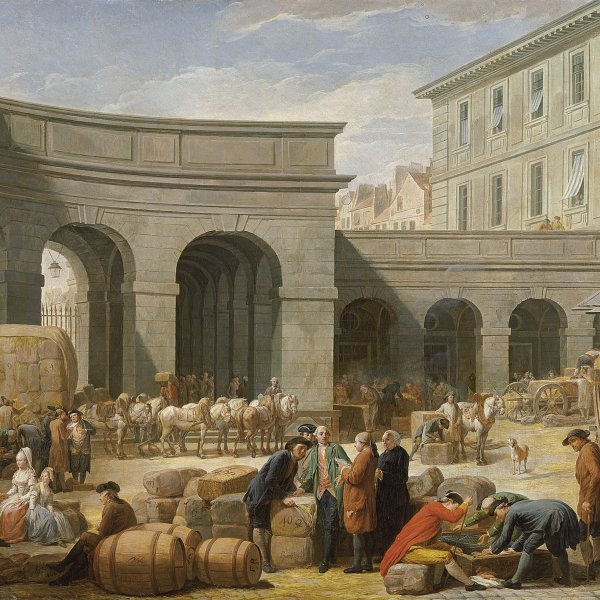Nicolas-Bernard Lépicié
Paris, 1735-1784
Nicolas-Bernard Lépicié was the son of the Parisian printmaker François- Bernard Lépicié, from whom he received his first lessons before entering the studio of the painter Carle Vanloo. In 1759 he won the second prize in the Prix de Rome although he never travelled to Italy. In 1769 he entered the Académie Royale, presenting Achilles and the Centaur Chiron (Musée des Beaux-Arts et d’Archéologie, Troyes), and a few years later, in 1777, he was appointed professor at that institution. During this phase Lépicié achieved a solid reputation as a history painter, which allowed him to participate in numerous royal projects. Between 1769 and 1771 he painted Narcissus turned into a Flower and Adonis turned into an Anemone by Venus for the Pietit Trianon (both in situ). For the École Militaire in Paris he painted a history painting of Saint Louis imparting Justice. On the commission of the Count of Angiviiller, director of the King’s Works, he produced tapestry cartoons for the Gobelins Royal Tapestry Manufactory.
In addition to history painting, Lépicié executed portraits and genre scenes, and was particularly popular in the latter genre, even being compared to David Teniers. Among his finest examples is Le Lever de Fanchon (Hôtel Sandeli, Saint-Omer), which was praised when it was shown at the Salon in 1773. The minute detail, painstaking technique and powers of observation of his works recall 17th-century Dutch painting and the Italian 18th-century view painters.
Lépicié was a prolific artist despite his early death left behind a large number of paintings and drawings. Some of the most important artists of the generation of Neo-classical painters trained in his studio, including Carle Vernet, Jean-Baptiste Regnault, Jean-Joseph Taillasson, and Henri-Pierre Danloux.
In addition to history painting, Lépicié executed portraits and genre scenes, and was particularly popular in the latter genre, even being compared to David Teniers. Among his finest examples is Le Lever de Fanchon (Hôtel Sandeli, Saint-Omer), which was praised when it was shown at the Salon in 1773. The minute detail, painstaking technique and powers of observation of his works recall 17th-century Dutch painting and the Italian 18th-century view painters.
Lépicié was a prolific artist despite his early death left behind a large number of paintings and drawings. Some of the most important artists of the generation of Neo-classical painters trained in his studio, including Carle Vernet, Jean-Baptiste Regnault, Jean-Joseph Taillasson, and Henri-Pierre Danloux.





